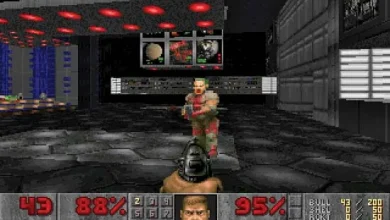Ars’ analysis is based on publicly available data from the Gamestop NFT marketplace webpage. So far, that marketplace is sorted into nearly 54,000 distinct NFTs (many of which are available in multiple limited “editions”) that are all part of one of about 250 collections. The combined, displayed “total volume” for those NFTs—which includes both initial sales by the creator and subsequent sales by secondhand purchasers—totaled about 1,835 ethereum (ETH) as of Tuesday afternoon (roughly $1.98 million at current ETH market prices).
GameStop takes a 2.25 percent marketplace fee on all those transactions (broadly in line with competing marketplaces), which translates to about $44,500 at current market rates. The rest of that sales volume goes to the people selling the NFTs, after crypto network fees and a variable creator royalty fee are taken into account.
Of those 250 collections, the most popular—a set of 10,000 animated GIFs called MetaBoy—currently accounts for 25 percent of GameStop NFT trading volume. The top four NFT collections on the service so far account for just over 52 percent of all trading. On the other end, 48 collections representing 317 distinct NFTs have yet to see any exchanges on the GameStop platform. The median collection on the service has seen about 0.9 ETH ($970) in trading volume so far.
A drop in the bucket
On the one hand, $45,000 in daily transaction fees will practically not impact GameStop’s bottom line, which brought in over $6 billion in net sales (or $16.5 million per day) in its last full fiscal year. Put another way: If GameStop’s NFT transaction fee revenue remains constant at its current level for an entire year, it will represent just 0.27 percent of the company’s fiscal 2021 revenues.

On the other hand, GameStop’s NFT marketplace is distinctly different from the bulk of the company’s business. GameStop’s thousands of retail stores require spending on physical inventory, shipping and warehousing costs, retail employee wages, or brick-and-mortar store maintenance. Those costs were largely responsible for GameStop’s $381 million loss in its last fiscal year, despite all that revenue.
By contrast, GameStop’s “non-custodial” NFT blockchain—which runs on Loopring, a “Layer 2” solution that itself runs on top of ethereum—doesn’t come with any of those ongoing costs. And while GameStop has reportedly invested tens of millions of dollars to start its NFT marketplace, the transaction fee revenue it’s making from the effort probably comes with little overhead.
A biggish fish in a shrinking, fetid pond
Of course, GameStop’s current daily NFT transaction earnings are just a starting point and could rise or fall significantly as the new marketplace becomes more mature. Recent trends in the NFT market have not been encouraging on that score, however.
OpenSea, for instance, the largest NFT marketplace, saw $141.86 million in trading volume on January 5, the day before The Wall Street Journal reported on GameStop’s developing NFT plans. In the last 24 hours, though, OpenSea has seen just $15.55 million in trading volume, a cratering of nearly 90 percent in just over six months.
If GameStop had launched its marketplace in January and achieved the same relative size to OpenSea as it enjoys today, the company would be earning over $400,000 in daily transaction fees on more than $18 million in total trading volume.
Going from a standing start to $2 million in launch day NFT trades could be a sign of what GameStop called “our special [connection] with gamers [which] provides us a unique opportunity in the web3 and digital asset world” in a March earnings call. And who knows, maybe the NFT market will turn around again and GameStop will “cement itself as the ultimate destination in the new paradigm of gaming,” as Immutable’s Robbie Ferguson suggested when announcing a deal with GameStop in February.
Still, it’s hard not to think that GameStop may have largely missed an NFT gold rush that has turned sour during the months it spent gearing up for this week’s launch. In January, The Wall Street Journal cited people familiar with the company’s plans in writing that “by getting into the crypto and NFT space while it is still in its infancy, GameStop hopes to avoid missing out on opportunities to be part of a budding trend as it did with computer-game downloads about a decade ago…”
Six months later, it looks like the NFT space has already passed its infancy and is firmly amid its final decline. GameStop’s NFT marketplace launches as a relatively big fish in this increasingly fetid pond, a fish that seems much too small to impact the company’s ongoing corporate struggles (including yet another wave of layoffs just last week).




